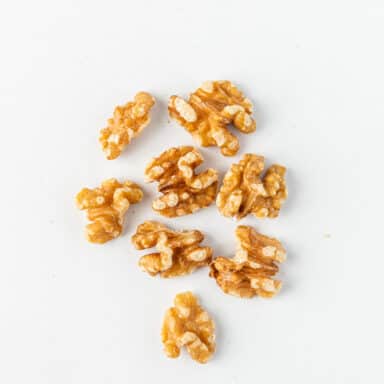These Persian herbs, spices and pantry staples are essentials to have on hand to make your favorite Persian recipes at home!

When you’re new to Persian cuisine and you find a recipe that you want to make, it can be difficult to find a local source for some of the ingredients. In addition to that, you may not even be familiar with what some of the ingredients are!
If you can relate, this resource is definitely for you! Bookmark this page and refer to it whenever you need information on a specific Persian herb, spice or condiment.
How to Convert Whole Spices to Ground Measurements
Allspice: 1 teaspoon allspice berries = 1 teaspoon ground allspice
Black pepper: 1 teaspoon peppercorns = 3/4 teaspoon ground pepper
Cardamom: Approximately 12 pods, dehusked = 1 teaspoon ground cardamom
Cinnamon: One 1 1/2-inch (4-centimeter) stick = 1 teaspoon ground cinnamon powder
Coriander seeds: 1 teaspoon coriander seeds = 3/4 teaspoon ground coriander
Cumin: 1 teaspoon cumin seeds = 1 teaspoons ground cumin
Fennel: 1 teaspoon fennel seeds = 1 teaspoon ground fennel
Mustard seeds: 1 teaspoon mustard seeds = 3/4 tsp ground mustard
Nutmeg: 1/2 nutmeg = 1 teaspoon ground nutmeg
To use ground spice instead of whole spice, the most straightforward conversion is to use about three-quarters as much ground as you would whole. If a recipe calls for a teaspoon of whole coriander, use ¾ teaspoon of ground coriander. There are, of course, factors to take into consideration.
Ball-shaped spices, like round peppercorns or coriander seed, don’t sit neatly in a stack in your measuring spoon. There are pockets of space between them. If you were to break them up, they would take up much less space, hence the idea of ¾ teaspoon ground spice for each teaspoon whole.
Smaller spices, like cumin or caraway, lay much more neatly together in a measuring spoon, so there is less space between the seeds. These spices come closer to a 1:1 ratio.
Source: spiceinc
Dried vs Canned Beans
Typically if a recipe calls for 1 cup dried chickpeas, which are soaked overnight and cooked, you can easily substitute 2 – 15 ounce cans of chickpeas (garbanzo beans).
NOTE: Whenever possible, we also include links to online sources where you can buy the ingredients. Some of them are Amazon affiliate links. This means, there is no difference in your cost to buy them, but we receive a small commission for your purchase. This helps us to keep creating recipes for you to make, so thank you for your support!
Favorite Persian Herbs and Spices
(data source: lots of research, taste testing and from a few favorite sites Persian Food Tours, Persian Mama, Masterclass)
Dried Persian Herbs
Note: When substituting, remember 1 tablespoon of fresh to 1 teaspoon dried herb.
Basil
The flavor of basil is a balance between sweet and savory, with hints of mint, anise, and pepper. While the initial flavor has pronounced tones of black pepper, this aromatic herb ultimately adds a hint of sweetness to any dish.

Dill
The wispy green leaves of dill are a popular culinary ingredient of various dishes throughout Europe and Asia. Fresh or dried leaves of dill give a mildly bitter flavor and exotic aroma to fish dishes or Persian rice.
The iconic Sabzi Polo and Shevid Baghali Polo are two most favorite Iranian foods that are usually served for special occasions like Nowruz.

Fenugreek leaves
One of the most common dried Persian herbs, it has a slightly bitter taste but adds complex sweetness. Just before adding the leaves to a dish, crush them between the palms of your hands to release the aromatics.

Mint
The leaves (fresh or dried) render a warm, fresh, aromatic, sweet flavor and deliver a cool aftertaste which is used in making tea, beverages, jellies, syrups, ice creams and candies.
Mint flavored tea is quite popular in India and also widely relished in the Arabian and African countries.
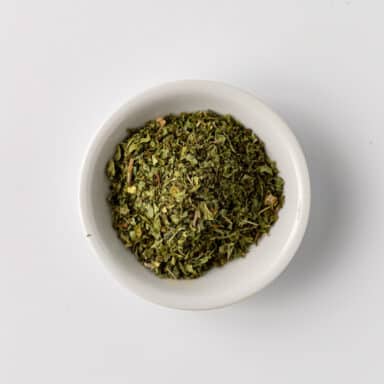
Parsley
A peppery herb used as a garnish for main dishes, soups, salad dressing. For its strong, pungent flavour, Parsley is the popular culinary ingredient in the Mediterranean and Middle Eastern cuisines.
It goes well with meat, vegetables and legumes. Felafel or Salad Olivie will taste heavenly with a pinch of freshly chopped parsley.

Savory
This flavorful herb has a delicately fresh aroma and peppery taste. The thin small leaves of summer savory used in a number of applications.
It is commonly added in soups, sauces, chicken.
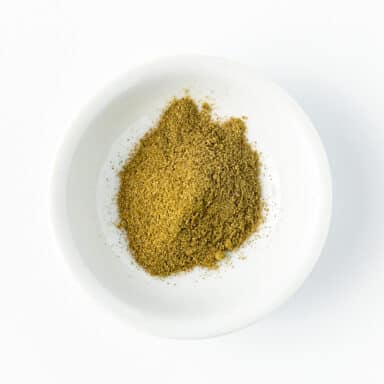
Edible Flowers/Petals
Rose Petals (Golab)
Golab has a high place in the Persian culinary culture. It gives a delicate appetizing aroma to so many sweets and desserts such as Shole Zard, baklava, traditional ice cream and Faloodeh.
The rose that is used in Persian cooking is from a species of the wild rose (Damask rose, or Gol Mohammadi) that grows only in certain areas of Iran. The other species of the rose family are not used for culinary purposes in Iran.
Rose is harvested in the spring and is sold fresh for a short while in the spice bazaar. Later in the season you can only find the dried rose to purchase. The dried rose petals are ground into powder and used as a spice.

Saffron
A must-have spice for Persian, Middle Eastern and Indian desserts, saffron, a crimson stigma from the saffron crocus, must be hand picked.
Grown in Greece, Afghanistan to the Kashmir Valley, with 90% coming from Iran, it takes hundreds of thousands of stigma to produce a pound of saffron, making it the most expensive spice in the world.
Saffron adds an intense aroma, a floral flavor, and a gorgeous golden color to rice and main dishes as well as desserts.
Personally I have found that Mehr Saffron to be the best quality and is my go to brand, but feel free to use a more economical brand linked below.

Basic Spices for Persian Cooking
Allspice, ground
Allspice is the dried brown berry of the tropical Pimenta dioica tree, a clove relative native to the West Indies and Central America.
It got its name in the 17th century, when allspice berries were first imported to Europe, since it’s said to taste like a combination of clove, cinnamon, and nutmeg.

Black Peppercorns (whole and ground)
These berries, which grow on climbing vines, are native to southern India. The unripe green berries are harvested when they ripen and turn red and are then dried to what we commonly see in grocery stores.
Black peppercorns, added whole or ground, impart intense aroma, depth, and heat to foods.

Cardamom (whole and ground)
Whether whole green pods, black seeds or ground, cardamom is the staple spice in making savory dishes, sweets and drinks. A pinch of this hot and pungent spice elevates every dish to a super mesmerizing level.
For its appealing aroma, cardamom is usually the main flavoring ingredient. it also finely accompanies the rose-water and saffron to uplift the marvel of aromas. The combination of these three is necessary for Shole Zard, the Persian rice pudding, which is a special dish for special occasions like Ramadan.

Cayenne (or ground red chiles)
Cayenne pepper is a super spicy chili that rates high on the Scoville scale—a method for measuring peppers’ heat levels. Cayenne is earthy and spicy, whereas paprika can range from earthy and spicy to mild and sweet.
Ground paprika is produced by grinding numerous peppers and can have a flavor ranging from sweet to fiery.

Coriander seeds
This versatile spice has a hint of citrus and adds earthy notes to dishes. The whole seeds are lightly toasted and then ground with other spices for several popular spice blends.
Ground coriander is popular because it adds texture to dishes and can be tasted with each bite. Coriander is often paired with cumin for just the right flavors of earthiness.

Cinnamon (whole and ground)
Cassia bark is an ingredient you find in most Persian and Middle Eastern grocery stores. It is a relative of cinnamon, and you can use it in exactly the same way. Cassia bark, with its delicately sweet flavor, is similar to cinnamon sticks.
It adds earthy flavors to meat and stews and is essential in making spice blends. Cassia bark is also used in Indian cooking to add a layer of intensity to tea and hot chocolate.
I have called for easier-to-find cinnamon sticks in the recipes, but if you do purchase cassia bark, it can be substituted.

Cloves (whole and ground)
If you’ve ever cooked an easter Ham, you know cloves. They’re strong. Add too much, and you will overpower other subtler flavors. These aromatic flower buds are harvested from the evergreen clove tree.
They lend a slightly sweet yet pungent aroma to Persian/Middle Eastern cuisine. You’ll often find cloves paired with cinnamon and black pepper for a perfect spice blend.
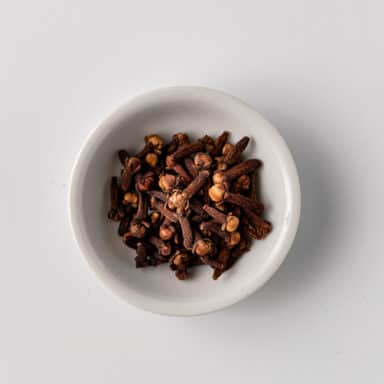
Cumin (whole and ground)
Cumin adds nutty, warm flavors and dimension to countless dishes. Cumin “zireh” is used as whole seeds, and ground, in different cuisines such as Persian, Indian, Northern African and Latin American. Toasting the seeds on low heat enhances the flavor.
I find this spice has a very distinctive warm, smoky spicy flavor; it is not hot though. Cumin adds a unique flavor to any recipe, whether it is in rice, chilies, dips, or hummus.
Ground cumin is one of the main ingredients in the Persian rice spice, yet the whole seed does wonders for the cumin rice when combined with the black cardamom pod. It is also used in pickled vegetables torshi.

Fenugreek seeds (whole and ground)
Small mustard- yellow seeds usually dry-roasted or fried in oil or ghee to reduce the bitterness. This bittersweet spice has an undertone of maple syrup and works really well with coriander, cumin, and red chile powder.

Nigella seeds
Often times these are called black onion seeds, but are not even from the onion family. There are two different spices that can be called “black cumin.” Nigella sativa looks almost like large pepper seeds, and can be eaten straight from the package or cooked.
Originally from South Asia and the Mediterranean, black cumin seeds also in India, Pakistan, and Afghanistan. Black cumin seeds grow out of an herb that is a member of the parsley family, and they have hints of parsley mixed with fennel in their flavor.
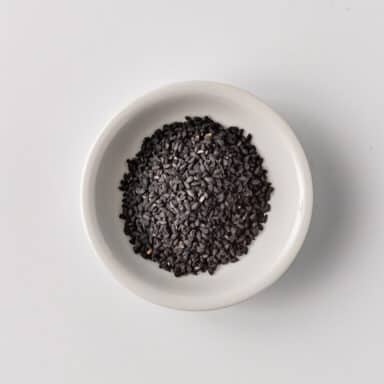
Nutmeg
Nutmeg is a warm spice with an almost sweet flavor, that is used in sweet and savory dishes. Nutmeg is best used in small amounts. The dried whole nutmeg can be up to an inch in length; it is a hard, oval shaped dark brown/gray seed with somewhat rough exterior.
This spice may be grated with fine graters at home, but it is also sold in spice shops in its powder form. Nutmeg is used in eggnog, and it adds a very nice flavor to bechamel sauce.

Sumac, ground
The brick-red finely ground berries of the sumac shrub give an astringent, lemony brightness to whatever they touch. It is used a great deal in Arabic cooking as a souring agent for meats, stews and dressings.
This is fantastic sprinkled over hummus or grilled meats.

Common Pantry Items and Condiments
Dried Apricots
Their flavor is almost musky, with a faint tartness that is more pronounced when the fruit is dried. Some people think of the flavor as being somewhere between a peach and a plum, fruits to which they’re closely related.
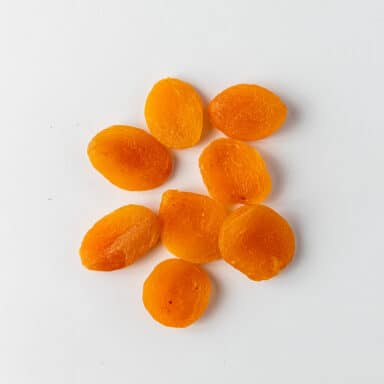
Dried Barberries
Barberries or Zereshk are dried tiny fruits giving an exotic kick to various meals. In Europe, they are mainly used for making jam but the Iranian cooks used them to garnish or give a sharp tartness to foods.
For instance, Kuku Sabzi will taste absolutely amazing with a few of these tiny red berries. To cut its sourness and make it more delicious every Persian cookbook presents a method. Adding a pinch of sugar to sautéed zereshk gives it a pleasant sweet and sour taste.

Dried Limes
Persian sun-dried lime is the mild souring agent for so many delicious soups and stews like Ghormeh Sabzi or Gheymeh. It can be used ground, sliced or whole. To add them as whole to your food, you just need a fork to make few pricks on its hard shell. In this way, the stew will hydrate the lime and release its amazing sour flavor.
You can serve the cooked limes with your dish or just squeeze them to have the tart juice in the stew and remove the remaining.

Dried Orange Peel (or fresh)
Orange or tangerine peel is a favorite seasoning ingredient in Persian culinary. Its sweet fragrance beside its bright orange color makes it a good choice for flavoring and garnishing cakes and foods like Morasa Polo (Persian jewelled rice) or Zereshk Polo.

Pomegranate Seeds
Depending on the variety and degree of ripeness, the seeds of the pomegranate can vary in taste from only a little sour (similar to ripe cherries) to fairly sharp (similar to uncooked cranberries).
They can be enjoyed straight by simply eating the seeds, in any of a number of pomegranate-derived goods, or as a juice.

Pomegranate Molasses
Pomegranate molasses is just pomegranate juice reduced to a thick, sweet-tart syrup. Use it in place of citrus juice or vinegar in salad dressings, or treat it as a glaze on meats before grilling or roasting, like in our recipe for pomegranate molasses chicken.
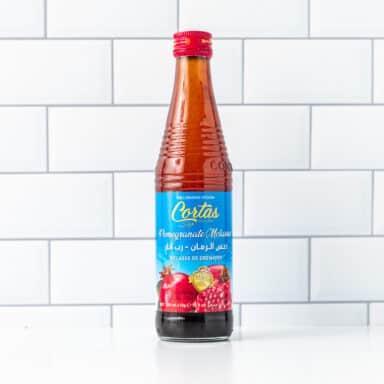
Orange Water
Infused with orange blossoms or Damascus rose petals, the best orange water brands are delicate and should remind you of fresh flowers rather than potpourri.
Used in desserts and sweets such as Moroccan rice pudding, you’ll also find it adding a depth to braises like lamb and other savory dishes.

Rose Water
This highly aromatic floral water made from condensing the steam from steeping rose petals in water. Golab has a high place in the Persian culinary culture.
It gives a delicate appetizing aroma to so many sweets and desserts such as Shole Zard, baklava, traditional ice cream and Faloodeh.

Tamarind Pulp/Paste
The tree produces bean-like pods filled with seeds surrounded by a fibrous pulp. The pulp of the young fruit is green and sour. Tamarind paste tastes very sour, with a somewhat citrusy taste.
It does have notes of smoke and caramel as well, making for a complex flavor profile. It is thick, sticky, and resembles molasses.
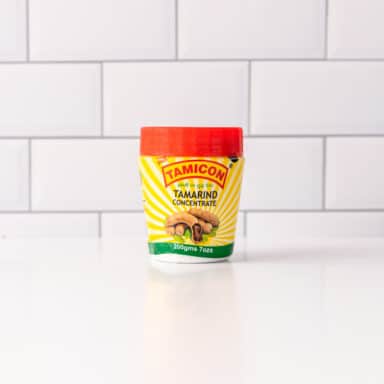
Cider Vinegar or White Vinegar
Apple cider vinegar, or cider vinegar, is a vinegar made from fermented apple juice, and used in salad dressings, marinades, vinaigrettes, food preservatives, and chutneys.
It is made by crushing apples, then squeezing out the juice.

Nuts and Seeds
Pistachios
An unsalted pistachio is smooth in texture and finishes with a slightly sweet flavor. The pistachio is also encased a thin edible wrapper that gives the nut an earthy flavor.
When the nut is young and green it is slightly soft and less sweet but as it matures it becomes harder and sweeter.

Sesame Seeds
Sesame seeds are tiny, cream-colored and shaped like teardrops. They have a mild nutty flavor which is further enhanced when the seeds are roasted. Sesame seeds have a unique and distinctive smell when used in cooking.
There are 4 varieties: white, black, yellow and red. Black sesame seeds a typically used for making sesame oil.

Walnuts
Walnut meat is rich, sweet, and earthy. The papery skin adds a nice bitterness. The walnut is a type of tree nut that has a hard, tough shell. The inner meat looks sort of like a tiny brain and has a rich, sweet taste.
The walnut is the most widely-consumed nut in the world and has been enjoyed for well over 8,000 years.
